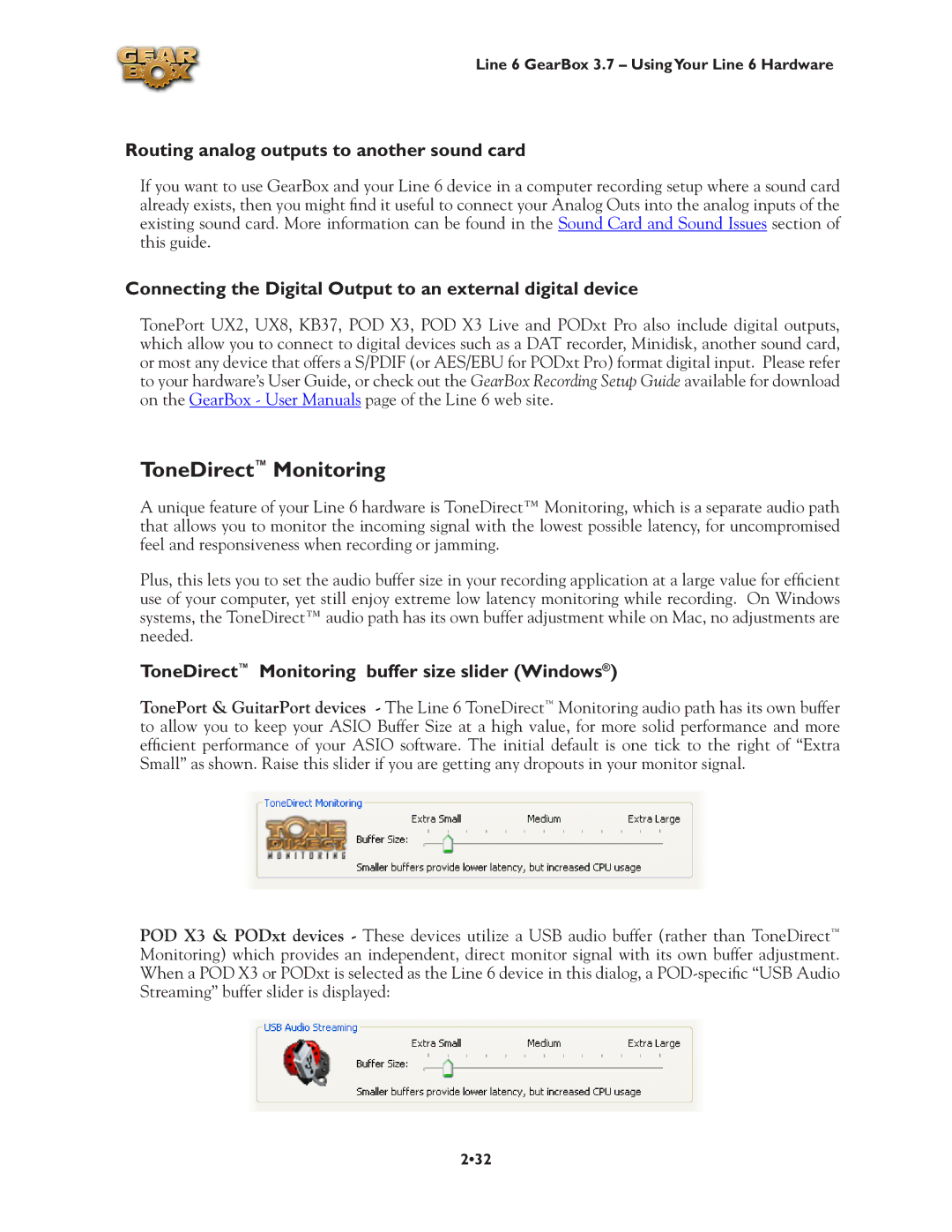
Line 6 GearBox 3.7 – UsingYour Line 6 Hardware
Routing analog outputs to another sound card
If you want to use GearBox and your Line 6 device in a computer recording setup where a sound card already exists, then you might find it useful to connect your Analog Outs into the analog inputs of the existing sound card. More information can be found in the Sound Card and Sound Issues section of this guide.
Connecting the Digital Output to an external digital device
TonePort UX2, UX8, KB37, POD X3, POD X3 Live and PODxt Pro also include digital outputs, which allow you to connect to digital devices such as a DAT recorder, Minidisk, another sound card, or most any device that offers a S/PDIF (or AES/EBU for PODxt Pro) format digital input. Please refer to your hardware’s User Guide, or check out the GearBox Recording Setup Guide available for download on the GearBox - User Manuals page of the Line 6 web site.
ToneDirect™ Monitoring
A unique feature of your Line 6 hardware is ToneDirect™ Monitoring, which is a separate audio path that allows you to monitor the incoming signal with the lowest possible latency, for uncompromised feel and responsiveness when recording or jamming.
Plus, this lets you to set the audio buffer size in your recording application at a large value for efficient use of your computer, yet still enjoy extreme low latency monitoring while recording. On Windows systems, the ToneDirect™ audio path has its own buffer adjustment while on Mac, no adjustments are needed.
ToneDirect™ Monitoring buffer size slider (Windows®)
TonePort & GuitarPort devices - The Line 6 ToneDirect™ Monitoring audio path has its own buffer to allow you to keep your ASIO Buffer Size at a high value, for more solid performance and more efficient performance of your ASIO software. The initial default is one tick to the right of “Extra Small” as shown. Raise this slider if you are getting any dropouts in your monitor signal.
POD X3 & PODxt devices - These devices utilize a USB audio buffer (rather than ToneDirect™ Monitoring) which provides an independent, direct monitor signal with its own buffer adjustment. When a POD X3 or PODxt is selected as the Line 6 device in this dialog, a
2•32
